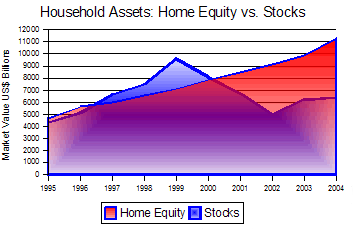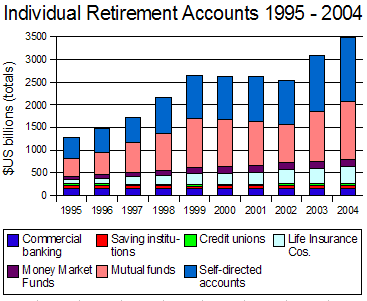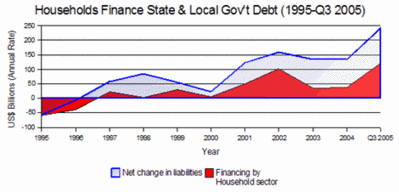Home Equity Beats Stock Investment : 1995 - 2004
by John Schroy filed under Equities, Individual Investors
In 1995, U.S. households held similar amounts of assets in home equity and corporate stocks: US$4.3 trillion in stocks and US$4.7 trillion in home equity. (See: Federal Reserve Flow of Funds Table B100.)
Over the decade, the situation changed dramatically, so that by 2004, households held US$4.8 trillion more in home equity than in corporate stocks, as the graph shows.
 Home Equity vs. Stock Holdings
|
||
This difference came about because of the crash in the stock market in 2000-2001 and because of the steady increase in home values throughout the decade.
[Note: ‘Home Equity’ is calculated by subtracting home mortgages from the market value of residential property owned by this sector.]




